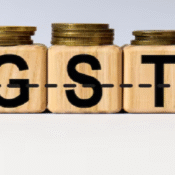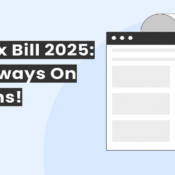
Income Tax Bill, 2025 – A New Era in India’s Taxation
The Revised Income Tax Bill, 2025, introduced on 11th August 2025, marks the most significant tax reform in over six decades. It completely replaces the Income-tax Act, 1961, which had become overly complex with more than 800 sections, countless amendments, and frequent legal disputes.
This bill is designed to make the tax system simpler, more transparent, and digital-first, while also reducing compliance burdens for individuals and businesses.
1. Complete Rewrite of the Law
- The old Act had 819 sections spread across 47 chapters, full of cross-references and outdated clauses.
- The new bill brings this down to 536 sections in 23 chapters, removing redundant provisions and consolidating similar rules.
- Legal language is now clearer, shorter, and more direct, making it easier for both taxpayers and professionals to interpret without heavy legal cross-checking.
- Think of this as a full software upgrade — not just patching old issues but rebuilding the code for better performance.
2. Goodbye ‘Assessment Year’ – Welcome ‘Tax Year’
- In the old system, there was a confusing gap between the “Previous Year” (when income was earned) and the “Assessment Year” (when tax was filed).
- The bill introduces a single ‘Tax Year’ — the same year in which the income is earned and reported.
- This simplifies tax planning and communication with taxpayers, removing one of the most common sources of misunderstanding.
3. New Slabs – Higher Relief for Middle Class
- Basic exemption limit remains at ₹12 lakh in the new regime.
- Standard deduction for salaried individuals is increased to ₹75,000, making the effective zero-tax income ₹12.75 lakh.
| Annual Income (₹) | Tax Rate |
|---|---|
| 0 – 4 lakh | Nil |
| 4 – 8 lakh | 5% |
| 8 – 12 lakh | 10% |
| 12 – 16 lakh | 15% |
| 16 – 20 lakh | 20% |
| 20 – 24 lakh | 25% |
| Above 24 lakh | 30% |
- For taxpayers in the ₹8–15 lakh range, the reduced rates mean noticeable annual savings compared to earlier slabs.
4. Digital-First Tax Administration
- Faceless assessments and e-proceedings will now be the default.
- Taxpayers no longer need to physically visit tax offices for most matters, cutting down:
- Travel time and costs
- Risks of harassment or corruption
- Processing delays
- Refunds are expected to be processed faster and with fewer disputes.
5. Stronger but Targeted Enforcement
- For authorised search and seizure cases, tax officers can now access:
- Email accounts
- Cloud storage data
- Social media activity
- Digital wallets and cryptocurrency holdings
- This ensures better tracking of hidden income in the digital economy while keeping the focus on high-risk cases.
6. Litigation Reduction & Clarity
- Many vague or contradictory provisions have been removed.
- The Central Board of Direct Taxes (CBDT) has been given more rule-making powers to quickly adapt regulations to real-world needs.
- The aim is to reduce unnecessary legal battles and create a more predictable tax environment.
7. New NIL-TDS Certificate Facility
- Individuals whose income is below the taxable limit can apply for a NIL-TDS certificate.
- This prevents tax being deducted at source unnecessarily and avoids the hassle of claiming refunds later.
8. Taxpayer-Friendly Reforms
- Late Filing Refunds: Taxpayers can claim refunds even if they file their returns late.
- House Property Deduction: A clear legal definition now exists for the 30% standard deduction, helping property owners plan better.
- Reintroduction of Section 80M: Restores deduction on inter-corporate dividends to avoid double taxation for companies.
- Relief on Vacant Properties: Owners can claim tax relief if they are unable to rent out a property.
- MSME Definition Aligned: Brings the tax law definition in line with the MSME Act, 2006, avoiding compliance confusion.
- Expanded Pension Benefits: Commuted pension tax benefits now extend beyond employees to include non-employees.
Conclusion
The Income Tax Bill, 2025 is not just a tax rate revision — it is a complete structural overhaul.
With simplified rules, better digital systems, and more taxpayer-friendly provisions, it is expected to:
- Reduce compliance headaches
- Minimise litigation
- Offer genuine relief to middle-class taxpayers
- Improve transparency in the digital age
This is a historic moment in Indian taxation — potentially making the system simpler, fairer, and future-ready.




